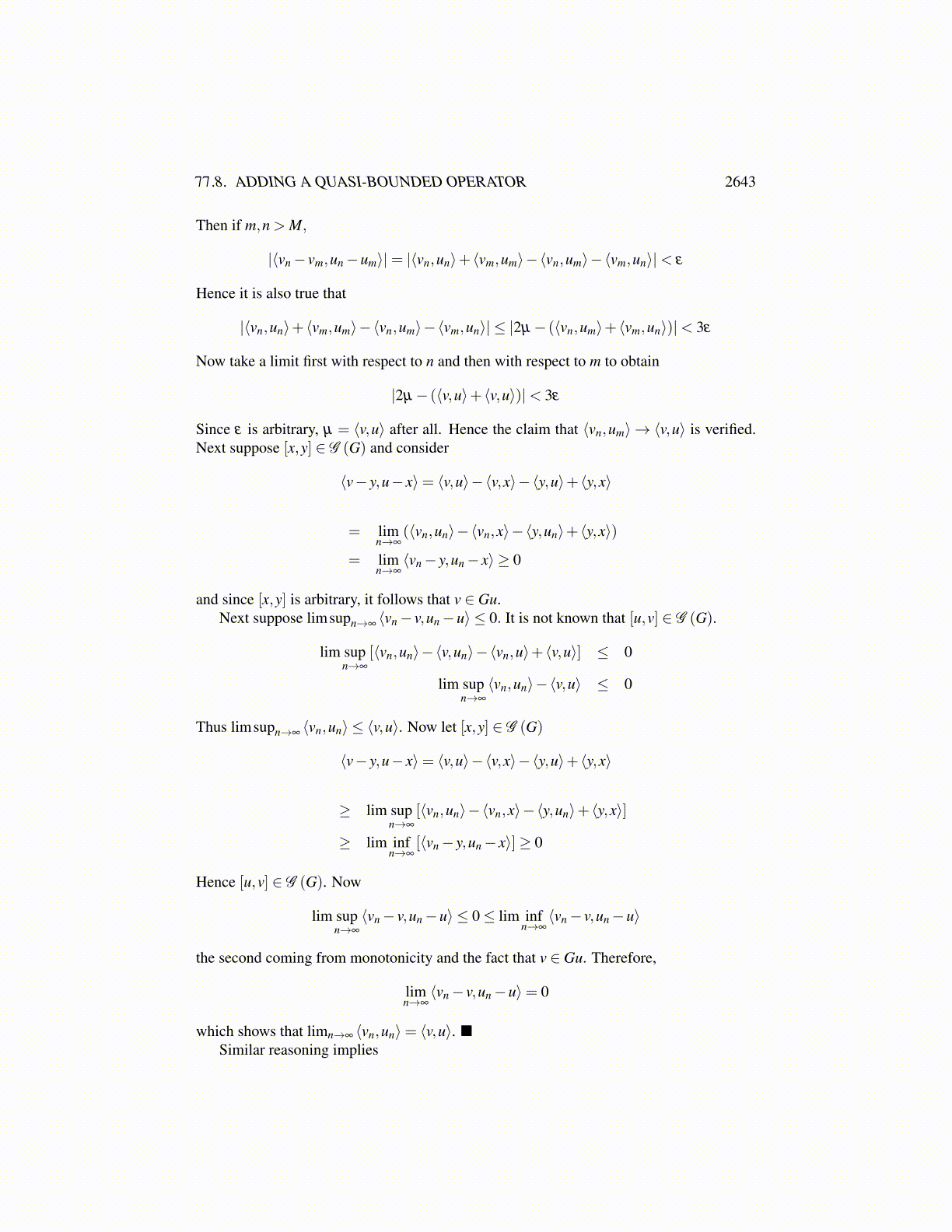
77.8. ADDING A QUASI-BOUNDED OPERATOR 2643
For ω → u(·,ω) measurable into V ,
ω → A(u(·,ω) ,ω) has a measurable selection into V ′. (77.8.78)
This last condition means there is a function ω→ u∗ (ω) which is measurable into V ′ suchthat u∗ (ω) ∈ A(u(·,ω) ,ω) .
As for the operator B it is either independent of ω and is a nonnegative self adjointoperator mapping W to W ′ or else it is of the form k (ω)B where k ≥ 0 and is measurable.
We will assume here that p > 1. Then the following main result was obtained above. Itis Theorem 77.5.7.
Theorem 77.8.1 If 77.8.73 - 77.8.78 and B as described above,let q(t,ω) be a productmeasurable function into V such that t→ q(t,ω) is continuous, q(0,ω) = 0.
Then, there exists a solution u of the integral equation
Bu(t,ω)+∫ t
0z(s,ω)ds =
∫ t
0f (s,ω)ds+Bu0 (ω)+Bq(t,ω) ,
where (t,ω)→ u(t,ω) is measurable. Moreover, for each ω , Bu(t,ω) = B(u(t,ω)) fora.e. t and z(·,ω) ∈ A(ω,u(·,ω)) for a.e. t. Also, for each a ∈ [0,T ] ,
Bu(t,ω)+∫ t
az(s,ω)ds =
∫ t
af (s,ω)ds+Bu(a,ω)+Bq(t,ω)−Bq(a,ω)
The idea here is to show that everything works as well if a suitable unbounded maximalmonotone operator is added in. The result is interesting but not as interesting as it might be.This is because the maximal monotone operator must be quasi bounded. Still it is interest-ing to note that the above holds for some unbounded operators. This has been pointed outin the case where there are no stochastic effects in a recent paper [54]. This generalizes thisresult by considering the measurability of solutions and allowing for possibly degenerateleading operator B.
To begin with assume q = 0.Now let G : D(G)⊆ V →P (V ′) be maximal monotone. Also assume that 0 ∈D(G).
Then you have⟨u∗,u⟩ ≥ ⟨g∗,u⟩ if u∗ ∈ Gu
for every g∗ ∈ G(0). Hence
⟨u∗,u⟩ ≥ −|G(0)|∥u∥V if u∗ ∈ Gu (77.8.79)
where |G(0)| ≡ inf{∥y∗∥V ′ : y∗ ∈ G(0)}.There is a standard way of approximating G with bounded demicontinuous operators
which is reviewed next. It is all in Barbu [13]. See Section 25.7.4. Since G is maximalmonotone,
0 ∈ F(xµ − x
)+µ
p−1G(xµ
)where F is a duality map for p, the one used in the above theorem. Barbu uses only p = 2but it works just as well for arbitrary p > 1 with the minor modifications used here. To see